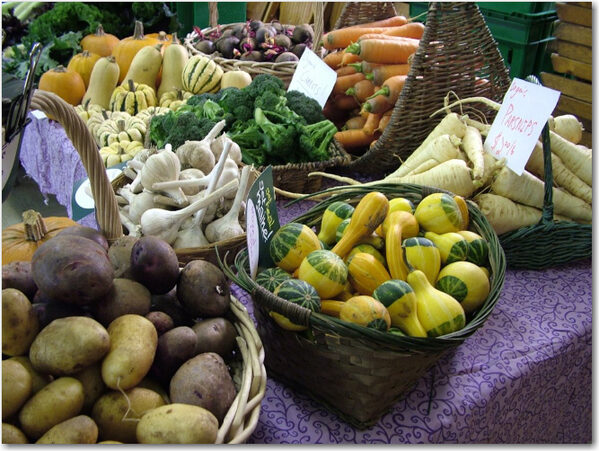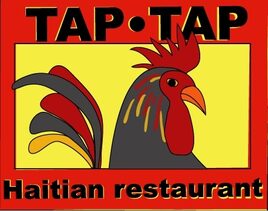In March 2011, a multi-course “Grand Banquet of Rainforest Insects” was held at Oxford University’s Museum of Natural History to garner support for rain forest protection. Thomasina “Tommi” Miers, cookbook author and chef of the award-winning London restaurant Wahaca, created a feast made up of barbecue-flavored oven-baked mealworms, sautéed crickets, grasshopper salsa, and fried locusts dipped in salted caramel and dark chocolate, to name just a few dishes. Miers, an avid environmentalist, feels strongly that we cannot sustain our current levels of meat-eating for much longer.
Other reasons to eat bugs
Indeed, novelty and fundtemraising are far from the only motivations for broadening one’s culinary horizons. Today there are a billion hungry people on the planet. That number is going to grow, and the cost of food is already soaring. Over the past year, real food prices (adjusted for inflation) have risen by 33 percent, and according to the Organisation for Economic Co-operation and Development, a further 20 to 30 percent increase is expected in the next ten years.
Based on a medium level of average fertility, the United Nations predicts a global population of 9.3 billion people by 2050 (a rise of more than 2 billion) and, taking into account already existing levels of malnutrition, estimates that food production will need to increase by 70 percent. Reaching that goal at today’s level of crop productivity would require at least 3.5 million square miles of new farmland.
But economist Jeffrey Sachs, the director of Columbia University’s Earth Institute, calculates at most that given environmental and practical constraints, we might be able to add only a ninth of what is needed. As it is, agriculture is already a driver of ecological problems, fueled by what appears to be an insatiable demand for meat and dairy products (not to mention the new dedication of some cropland to producing biofuels).
So where is all this much-needed food going to come from? Well, according to the Food and Agriculture Organization (FAO) and the World Wildlife Fund’s website, bugs are a possible solution to the world’s growing food problem. Many provide as much protein—weight for weight—as beef or fish, so they are a possible alternative to eating meat, not only for the future sustainability of the planet, but for the sake of health as well.
In Mexico, farmers who used to spend money on pesticides have realized that by selling the insects, candy-coated or fried, they can make larger profits.
At a 2008 conference in Thailand, where nearly 200 different insect species are eaten, The FAO highlighted insects as an environmentally friendly alternative source of proteins, vitamins, and minerals. Insects have the potential to supplement the growing demand for protein, both for humans and for animals because they convert feed into protein much more quickly and efficiently than traditional livestock, according to Afton Halloran at the FAO’s Edible Insects Program. In fact, so nutritious are some insects that the South African entomologist Rob Toms recommended that HIV-positive people eat mopane caterpillars to boost their nutritional levels.
According to Dennis Oonincx, an entomologist at Wageningen University in the Netherlands, insects may be a more efficient source of protein, and points to a need for a thorough life-cycle analysis—a method for determining the environmental impact of a product—for edible insect species. Oonincx has also pointed out that “there is a much lower likelihood of disease contamination from insects than there is from meat.” Because physiologically humans differ more from insects than from our fellow mammals, the chance that a pathogen will jump from insect to human is smaller than the chance it will jump from mammal to human.
Oonincx also compared the greenhouse gas emissions from five species of insects with those of cattle and pigs. His results showed that insects emit significantly smaller amounts of greenhouse gases for the amount of protein they produce—less methane and carbon dioxide per unit of mass gained—than pigs or cattle.
Six-legged gold
Entomophagy also has the potential to increase incomes in poor communities. In Mexico, farmers who used to spend money on pesticides to keep bugs off their crops have realized that by collecting and selling the insects, candy-coated or fried, they can make larger profits. And in South Africa, approximately 9.5 billion mopane worms are harvested annually from 7,700 square miles of mopane forests. They are worth $85 million, of which approximately 40 percent goes to producers—primarily poor rural women.
It would be sheer madness to use chemical pesticides to kill insects that are possibly more nutritious than the crops they prey on.
Unfortunately, as in all harvesting of wild creatures, over-exploitation can occur. In southern Africa there are areas where the mopane worm has already been extirpated. Tshireletso Lorraine Lucas, who studied the harvesting of mopane worms in central Botswana, found that their numbers are declining, and that this is due both to climatic factors and to overharvesting, with harvesters motivated increasingly by commerce rather than subsistence. And Leah Snow Teffo of the University of Pretoria and her team, working in South Africa, have shown that the demand for edible stinkbugs already exceeds supply.
One solution is insect farming. In Thailand, for example, approximately 20,000 farmers are raising crickets and locusts. And according to the FAO, it is possible to treat insects “as mini-livestock”:
Some arthropods are already reared on an industrial scale such as edible scorpions in China. Others, such as crickets and water beetles, are reared on a semi-industrial scale. In temperate zones insect rearing companies already produce insects as feed for reptiles and primates. In the Netherlands three such insect growers have set up special production lines to produce for human consumption. In other parts of the world attempts are being made to rear insects artificially such as palm weevil, mopane worm, and wasps.
In some cases insect harvesting could even serve as a method of biological pest control. Swarms of millions upon millions of locusts can wipe out entire crops in Africa. It would be sheer madness to ignore this flying protein or to use chemical pesticides to kill insects that are possibly more nutritious than the crops they prey on.
Furthermore, cultivating and harvesting insects requires that forests be preserved, not felled. In the end,sustainable insect farming and eating may result in a win-win situation for people’s stomachs and bank accounts, for local agricultural crops and forests, and for the planet.
-------------------------------------------------
Dawn Starin is an honorary research associate at University College London and has spent decades doing research in Africa and Asia. Her articles have appeared in publications as varied as Critical Asian Studies,The Ecologist, Gastronomica, the Journal of the Royal Society of Medicine, Natural History, New Internationalist, New Statesman, The New York Times, and Philosophy Now. Previous versions of this article appeared in Natural History magazine, The Solutions Journal, and Yes! Magazine.
 Via
Via 


 And we eat better---we eat dishes from Vietnamese, Ethiopian, and Persian restaurants, we cook from scratch, we not only grow veggies and compost, but we gather wild plants, we hunt wild game, and now we realize that we rarely go to the “supermarket” for food.
And we eat better---we eat dishes from Vietnamese, Ethiopian, and Persian restaurants, we cook from scratch, we not only grow veggies and compost, but we gather wild plants, we hunt wild game, and now we realize that we rarely go to the “supermarket” for food.

 Artwork via
Artwork via 